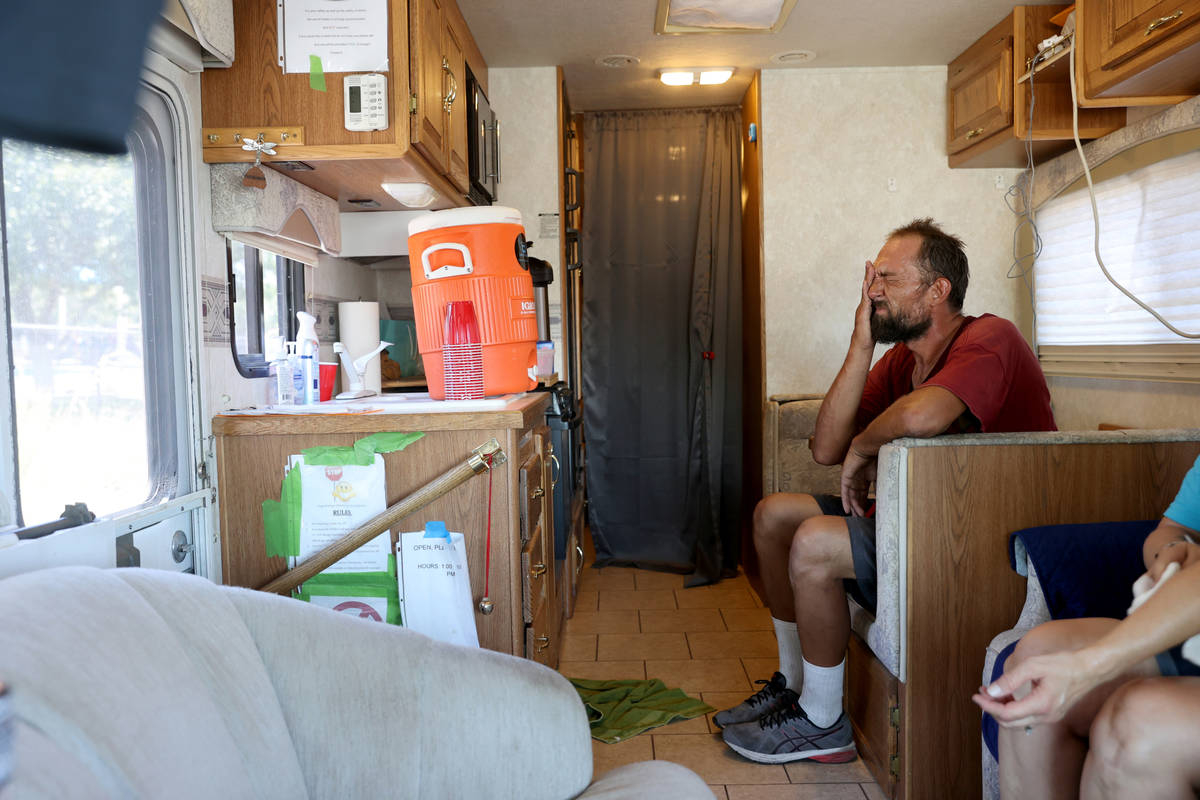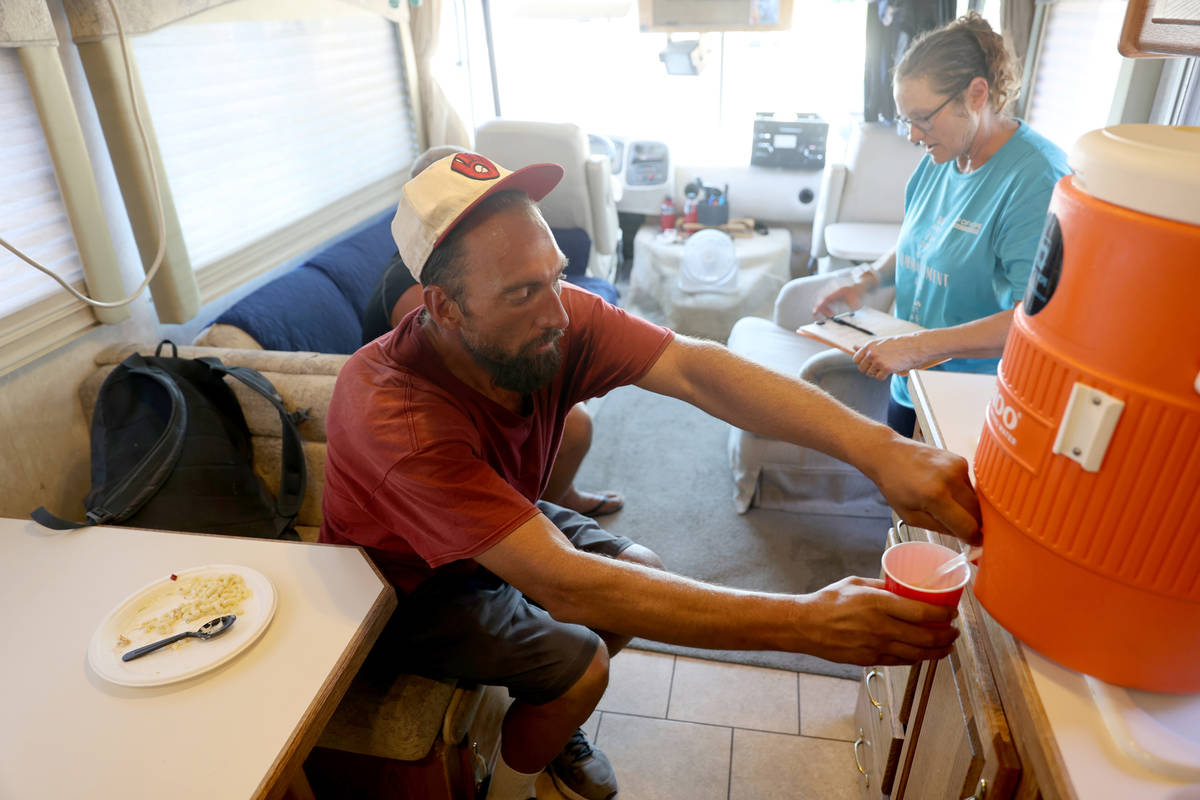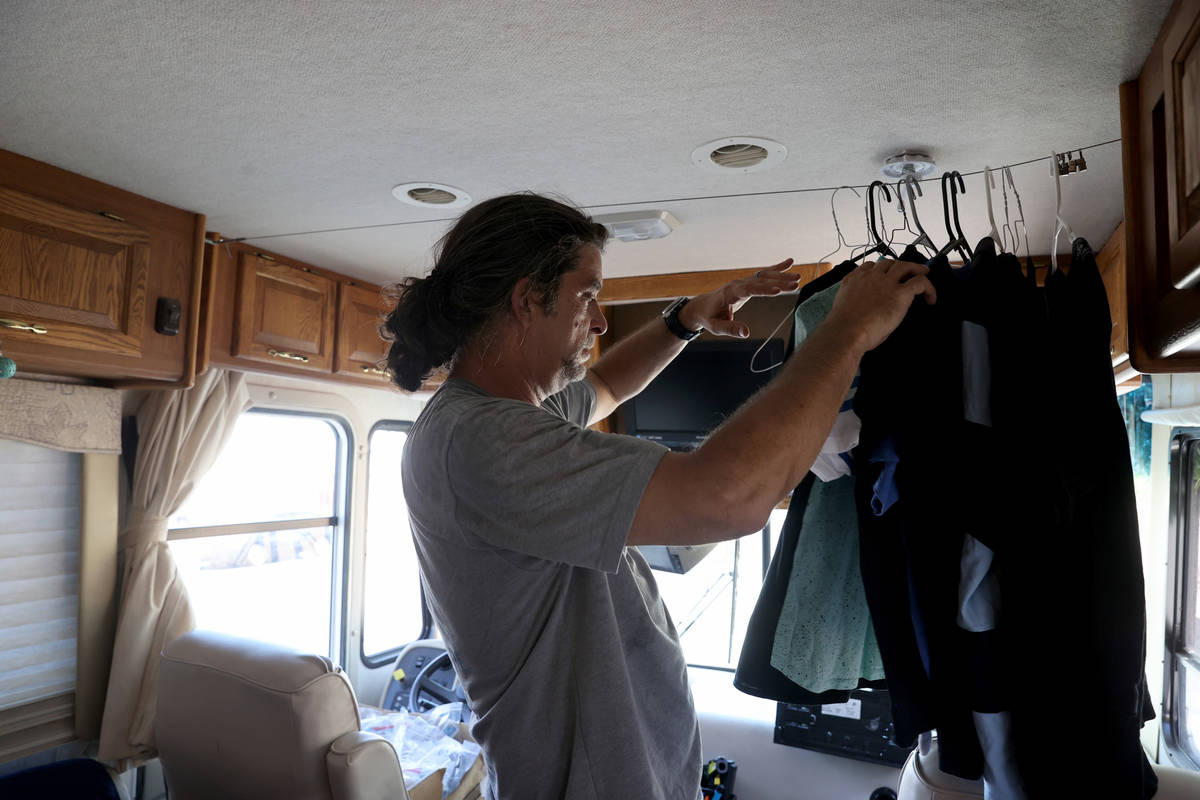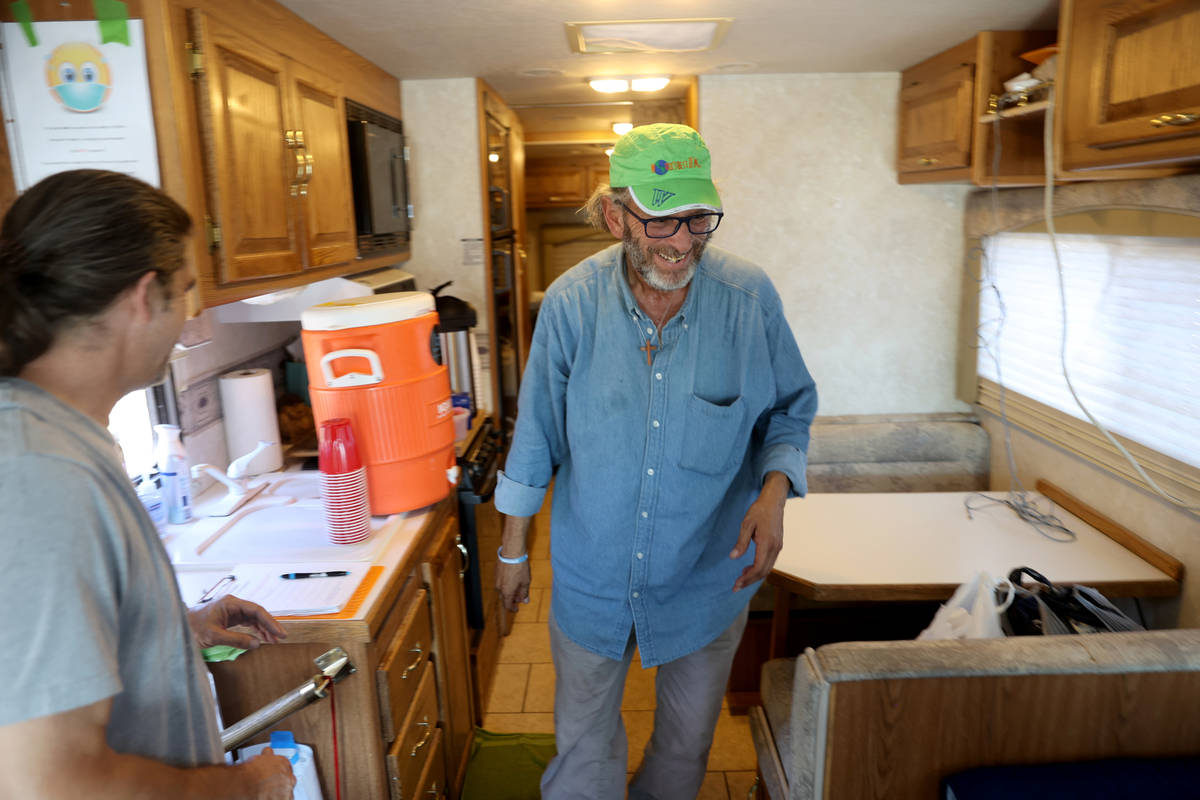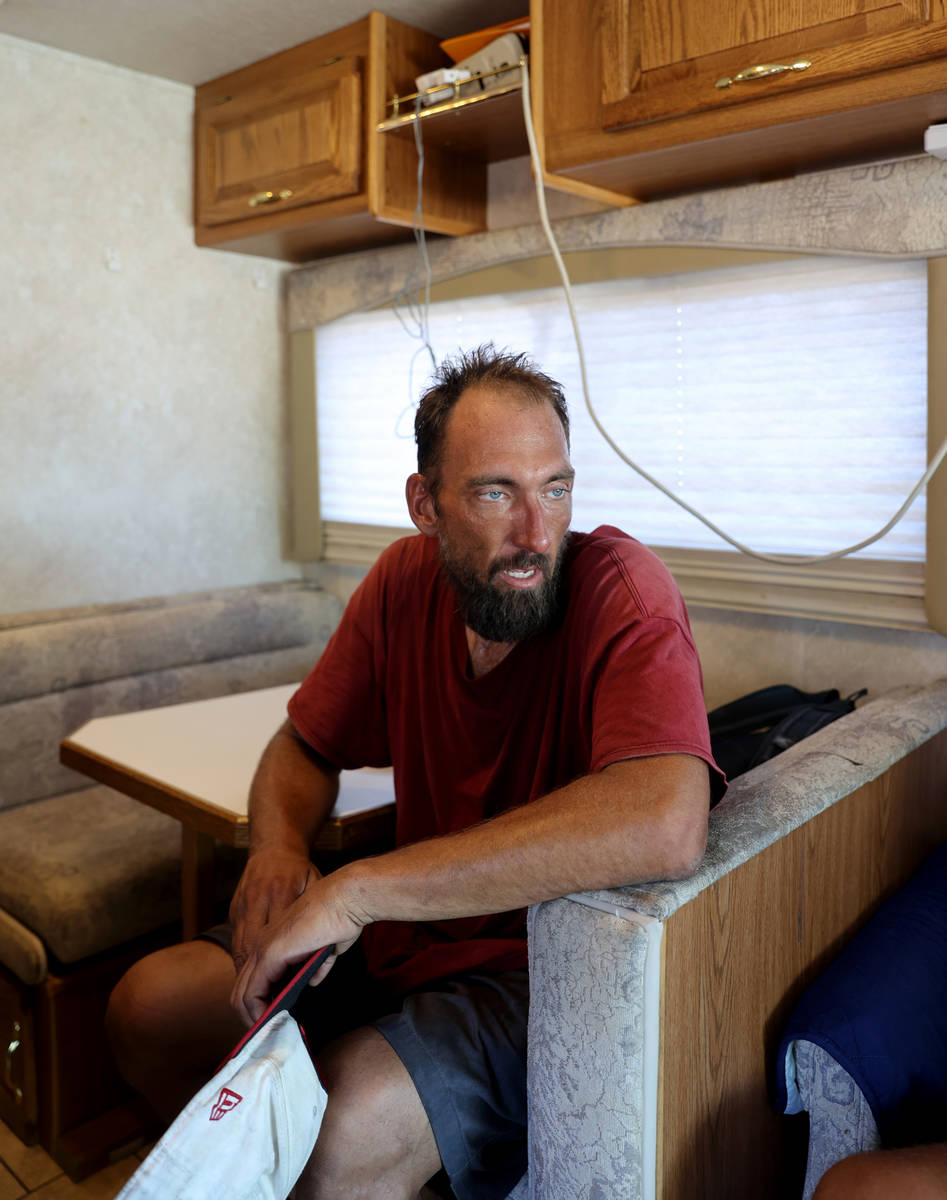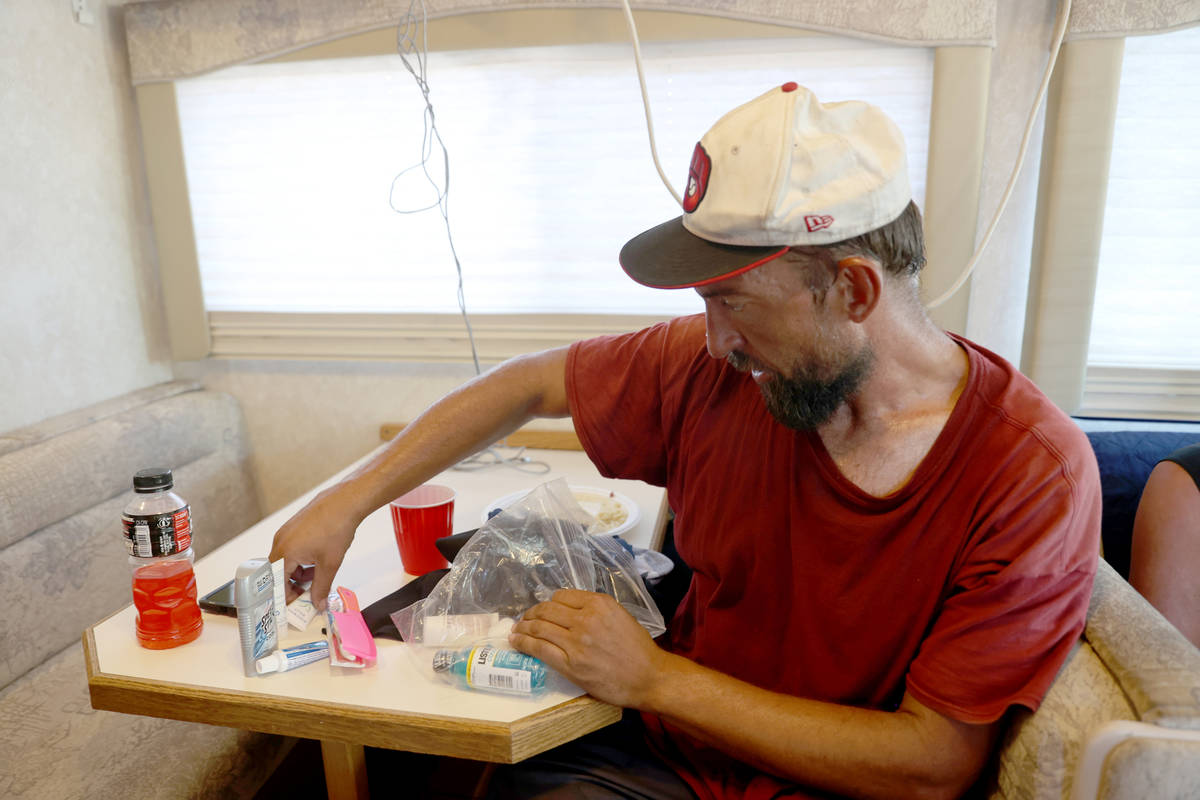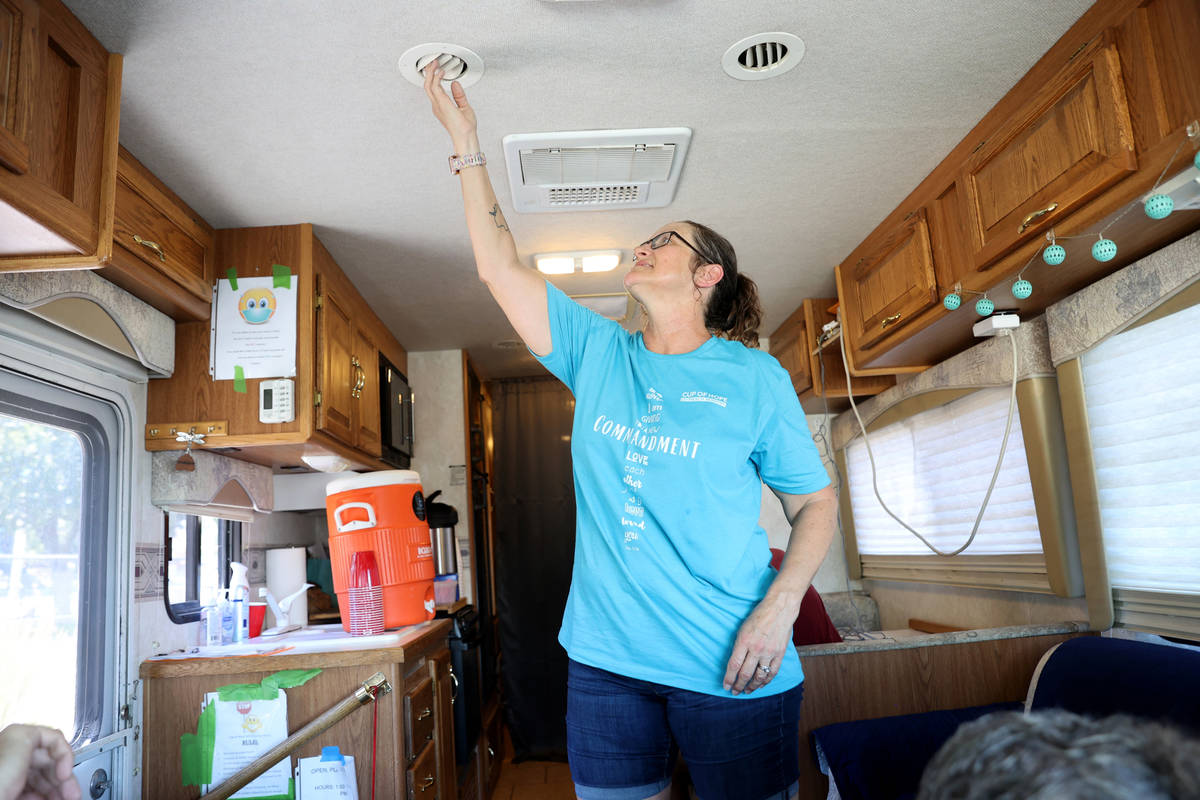Charitable giving rose in 2020. Now the challenge is to keep it up.
Keith Johnson’s RV is one spot of refuge in the corridor of hope in downtown Las Vegas.
He and his nonprofit volunteers with Cup of Hope ministries take Hope the RV there several times a week for unhoused people to shower, charge their phone or just get away from the elements.
So, one day in 2020 when Hope needed a $600 repair, Johnson tapped into his small-but-mighty donor network. One regular donor sent Johnson the money via a banking app while they were still on the phone.
“I know that to a family that’s making $50,000 a year, that $600 is a commitment. That’s huge,” Johnson said. “It’s the families that are true middle class that are for us, for our outreach, are the ones that keep us afloat.”
A report from Giving USA found that charitable giving increased 3.8 percent nationwide, when adjusted for inflation, in 2020. The donations totaled $471 billion, based on the report’s analysis of IRS tax data.
Las Vegas’ struggling economy throughout the COVID-19 pandemic made funding hard to predict — but individual giving, coupled with private and governmental grants, allowed many social service-based groups to match increased need.
As Nevada’s economic activity picks up steam and emergency aid wanes, nonprofits and charitable foundations are reflecting on how they can use last year’s momentum to continue services and keep the spotlight on those in need.
‘We never stopped’
Much of 2020’s donations and grant distributions varied depending on the nonprofit. Human and social services were most often the beneficiaries. United Way of Southern Nevada created an emergency assistance fund to distribute $2.4 million to 34 nonprofits for things such as personal protective equipment, emergency food, shelter and utility resources.
Individual donations “ebbed and flowed,” often around noticeable times for Johnson’s Cup of Hope. Some donors were charitable with their stimulus checks. Others gave around major holidays. It helped as Cup of Hope volunteers increased their services to include food delivery and more essentials that weren’t the focus before, like toilet paper.
“We never stopped,” Johnson said. “We were on the streets during the pandemic, when everything was closed. We didn’t not take COVID seriously, but at the same time, hunger and thirst, all those basic needs don’t end because COVID arises.”
Dips in charitable giving did occur in some service areas, including in the arts and nonprofit hospitals, according to Giving USA’s report.
Growth slowed for Rebecca Kerns’ arts-based nonprofit. As founder and executive artistic director at Ants in the Pants Productions, Kerns and her team partner with multiple Title I schools in Clark County to teach creative writing to third- through seventh-grade students.
She said grants and private donations help her operating costs. When schools were forced to switch to remote learning, her clients had to reconsider where they needed their resources.
“For a lot of the schools, they didn’t lose their funding but the funding had to go into different places it didn’t normally have to go to, like school computers,” Kerns said. “So, when it came time, all of our schools wanted us back but they said point-blank, I don’t know if we’ll have the money to pay even half of it.”
After a slow point in late 2020 and early 2021, Kerns believes her partnerships will pick back up. The nonprofit will work with at least five partners for the upcoming school year and learned that smaller groups makes them more successful. Now, it can offer both in person and virtual classroom options.
Philanthropic attention is still on Southern Nevada nonprofits. MacKenzie Scott, philanthropist and Amazon co-founder, donated the largest gift in United Way of Southern Nevada’s history — $10 million — in late 2020. The group announced its first round of “community impact grants” to 22 nonprofits this month, with another round anticipated.
The focus returned to United Ways’ core mission groups: student success, workforce development and community support. All were affected in some way by the pandemic. The average amount granted was about $50,000, the nonprofit told the Review-Journal in July.
‘I want to write a check’
Philanthropic groups also stepped in during the pandemic. Nationwide, foundations — the charitable organizations that often set up grants, scholarships or other donor funds — contributed $88.5 billion to charitable giving, according to the Giving USA report.
The Nevada Community Foundation, the largest community foundation in the state holding $185 million in assets last fiscal year, has seen a transition. President Gian Brosco recalled the first few months of the pandemic, when employees “were in a foxhole” trying to get funds to nonprofits and help people.
Donors wanted to help, he said. Brosco estimated giving was up 40 percent, to $26 million through various donor funds.
“On our side of this, we had donors who were saying, ‘How can we help? Where’s the most pressing need that you guys are seeing? I want to write a check,’” he said.
Wealthy donors are revisiting their strategic giving as the palpable fear and uncertainty of spring and summer 2020 fades. They have more ability to consider where their dollars can make an impact and they’re receptive to hearing where Community Foundation leaders think that should be.
“Those folks are now in a position where they can step back and say, ‘OK, now we can really reengage and I have a psychological comfort level and frankly, I have an obligation because I’ve done well over the course of this and a lot of people haven’t.’” Brosco said. “So, I think you’re gonna see at least on the Community Foundation giving side, that probably the giving won’t slow that much.”
For some, the pandemic offered a chance to get more involved in their giving. At the Rogers Foundation, a privately funded foundation founded by Jim and Beverly Rogers that funds higher education scholarships and artistic residency programs, staff worked with their scholarship recipients to make sure they were successful through the pandemic’s biggest hurdles.
Michelle Sanders, the executive vice president and chief operating officer, said because foundations are generally funders, it can lead to a hands-off approach. Her organization adapted by working more directly with their scholarship recipients through their nonprofit, CORE, and mentorship connections already in place.
The foundation gave $4 million last year and had 21 scholarship recipients, Sanders said. It also used about $20,000 in funds for emergency response needs for its scholars.
Sanders learned that listening to clients, experts and community members was the best way to direct funding.
“I can give, but what am I really giving to and is it going to enhance or hurt?” she said. “If you’re not in touch with the community, when you don’t have your finger on the pulse of what’s happening there, that giving is usually in vain.”
McKenna Ross is a corps member with Report for America, a national service program that places journalists into local newsrooms. Contact her at mross@reviewjournal.com. Follow @mckenna_ross_ on Twitter.



